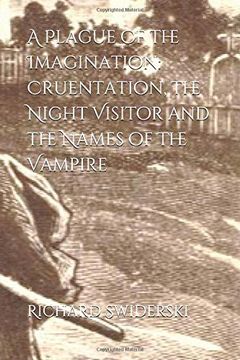A Plague of the Imagination: Cruentation, the Night Visitor and the Names of the Vampire (en Inglés)
Reseña del libro "A Plague of the Imagination: Cruentation, the Night Visitor and the Names of the Vampire (en Inglés)"
Since antiquity, belief in life after death has been drawn both fearfully and hopefully to the physical nature of the corpse itself. The corpse might exhibit the flow of body fluids, cruentation of cruor and sanguis, that were a judgment upon a murderer present, or seem to draw life force away from the living in visible signs. By the end of the 17th century, European writers had documented cases of individuals in Slavic communities believed to visit their relatives after death in search of meals, and to cause their wasting and death. Stories of these "vampires," from a word for "visitors to the feast" with variants in several Slavic languages, identified them with nocturnal predators, with the plague and with incursions by Turkish invaders over shifting national borders. Imperial authorities took an interest in specific instances that threatened public order in border outposts. An multitude of published writings by religious, medical and scientific authorities in Germany, France, Italy and England described "vampires or blood suckers" and reflected on their origins and meaning while questioning that any such events had ever taken place. The dead husband visiting at night was offered as an explanation of a widow's pregnancy, and the vampire was ascribed to the beliefs about the dead encouraged by Eastern Orthodox priests for their own profit. As the presumably dead ravisher of young women. the vampire was first a fiction, even a comic opera device, within the story, but then in the early 19th century became a mysterious devourer of young life not connected to a specific corpse. He was the predatory capitalist, the war profiteer, the homosexual, and in anti-Semitic tracts, the Jew. As the name "vampire" consolidated these identities the upir, the strigon and the vrykolak remained. Women vampires in popular fiction were first deceitful lovers and spouses aiming to absorb male potency and property, or attracted to young vulnerable women as their male counterpart was. The vamp rising exultantly over the fallen male appeared around the same time as the Dracula and Nosferatu reassertion of male vampiric ascendancy. The application of the vampire metaphor in comic, horror, economic, medical and political strains continues to spread as a plague of the imagination. Certain features, the vigilance of the possible victims, the streak of fresh blood on the face of the corpse, the theft of blood and life, continue to accompany the plague.

